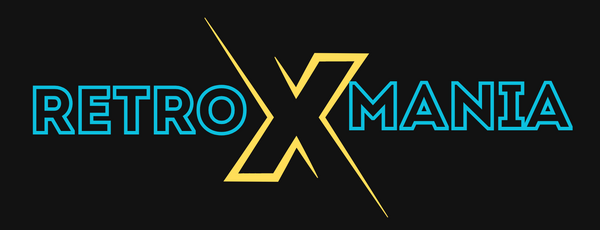Investing in Pokémon cards has become an increasingly popular option for collectors and enthusiasts. Whether you're a long-time fan or new to the Pokémon universe, this article will guide you through the first steps of investing in Pokémon cards and help you make informed choices to build a valuable collection.
🔥 Pokémon legends are reborn on Le Boncoin thanks to L'Imprimerie TCG!
Get ready to take a leap into the past! Charizard, Blastoise, and Venusaur return in the form of exceptional holographic replicas , signed L'Imprimerie TCG. Designed for demanding collectors and nostalgic fans, these cards feature a brilliant finish and a design faithful to the spirit of the first generation . Unavailable elsewhere, these little marvels are just a click away… but for how long?
Why invest in Pokémon cards?
The popularity of Pokémon cards is due to their ever-increasing value, especially for rare and vintage cards. Pokémon cards represent a potential investment for those seeking both sentimental and financial value.
The nostalgic appeal
Most collectors invest for sentimental reasons. Nostalgia for the 90s, when Pokémon debuted, attracts those who want to rediscover the heroes of their childhood. This emotional factor is a powerful driver that drives demand and, therefore, the value of vintage cards.
Growing demand
The Pokémon card market has exploded in recent years, thanks in part to influencers and celebrities who have revived the cards' popularity by showcasing them on social media. This has helped create a sustained interest in purchasing and investing in rare cards.
How to start your collection?
Before you start shopping for cards, it's important to understand a few key concepts. Here are the steps to get started.
1. Define an investment budget
As with any investment, setting a budget is essential. Pokémon cards can range from a few dollars for common cards to thousands of dollars for rare cards. Determining how much you're willing to invest will allow you to manage your collection without breaking the bank.
2. Know the different generations and editions
Pokémon cards are divided into different generations and editions. Here are the main ones:
- First Generation : The most prized, including rare cards like first edition Charizard and Pikachu.
- Limited and rare editions : such as shadowless cards or special editions.
- Modern cards : Less expensive but still popular, these include recent editions and cards like Pokémon GX, EX, and VMAX.
3. Understanding Card Rarity and Condition
Rarity and condition are key factors in card value. Rare cards, such as first-edition holographics, are highly sought after. A card's condition, from "Near Mint" to "Poor," is also crucial. Cards in pristine condition, especially those graded PSA 10, are the most sought-after and can command high prices.
Where to buy Pokémon cards?
There are several options for buying Pokémon cards as an investment. Here are some places where you can find authentic cards.
Online sales sites
Platforms like eBay, Cardmarket, and TCGPlayer are popular for buying Pokémon cards. They allow you to filter by rarity, condition, and price, helping you find the valuable cards you're looking for.
Card Shops and Conventions
Some specialty stores and collector conventions also offer good buying opportunities. You can find authentic cards there and even meet other collectors who can share expert advice.
Auctions and private sales
Auctions can be interesting, but be careful: prices can quickly climb, especially for rare cards. For the most valuable cards, you can also consider private sales, where collectors trade their cards.
How to evaluate the value of Pokémon cards?
The value of a Pokémon card depends on several criteria: its rarity, edition, condition, and popularity among collectors. Here are some key concepts for evaluating cards.
Use the classification services (PSA, BGS)
Grading is a service that officially assesses the condition of a card. Cards graded by PSA (Professional Sports Authenticator) or BGS (Beckett Grading Services) generally have a higher value. Grades range from 1 (Poor) to 10 (Gem Mint), and a card graded 10 can increase significantly in value.
Compare market prices
Comparing market prices is a useful way to determine a card's current value. You can check recent sales on eBay or specialized sites to see the prices of similar cards.
Strategies to make your investment profitable
Investing in Pokémon cards can be profitable, but conservation and diversification strategies must be adopted.
Store and protect your cards
To preserve the value of your cards, use appropriate protection: special sleeves, boxes, and binders. Cards must be protected from moisture, direct light, and impact. A well-preserved card retains its value better over time.
Diversify your collection
Don't focus solely on the rarest cards. It can be a good idea to acquire cards from different generations and editions to diversify your collection and minimize risk.
Mistakes to avoid for beginners
When you're just starting out, it's easy to make mistakes. Here are some pitfalls to avoid:
- Impulse buying : Rushing can lead to poor purchases. Take the time to carefully evaluate each card.
- Neglecting authenticity : Beware of counterfeits. Choose trusted sellers and ask for certificates of authenticity.
- Forgetting to grade cards : A graded card often has a higher value, especially if it is graded PSA or BGS.
Conclusion: An exciting and lucrative investment
Investing in Pokémon cards can be both exciting and lucrative. It's a market that combines fun and potential for profit, but it's important to start with the right foundation to avoid costly mistakes. By following this guide, you'll be better prepared to make informed choices and maximize the value of your collection. Whether you're a collector or an investor, Pokémon cards can provide valuable memories and long-term profit opportunities.




